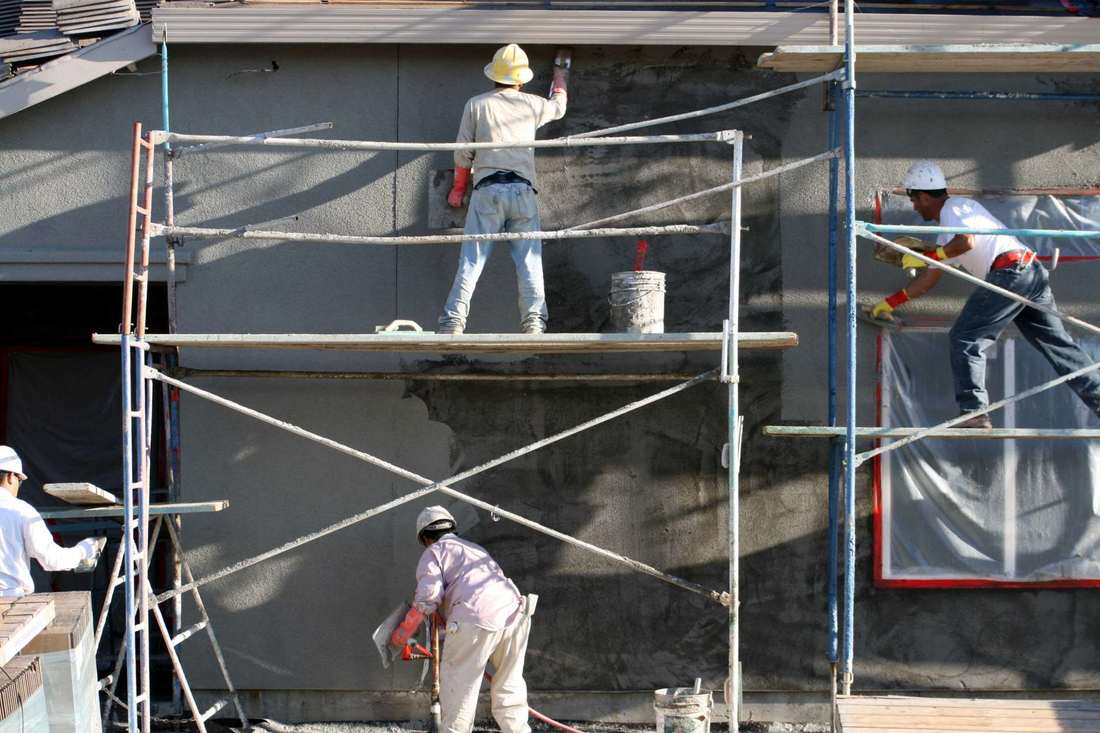Getting your house painted dramatically changes the curb appeal of your humble abode. It is a quick and simple way to make your entire home look like new for the upcoming season or just before putting it on the market. Unlike indoor painting, your exterior painting job leaves you at the mercy of the elements. The weather may not be conducive to having the outside of your house painted at a certain time of year. How can you better plan for the perfect application of paint on the exterior of your home?
In many cases, the temperature can be the biggest indicator of whether exterior painting is going to be successful. Some of the requirements for exterior painting can vary based on the type of paint you use. Keep in mind that the specific product you select could have its own additional requirements. Having the exterior of your home painted can be expensive, so be sure that you are making the most of your investment with these general guidelines.
Choose Warmer Weather
Most paint manufacturers will recommend a minimum outdoor temperature during the application of their product. Warmer weather tends to win out over colder weather where freezing can interfere with the paint’s ability to dry. The recommended temperature has historically been around 50 degrees Fahrenheit (10 degrees Celsius). You would want the temperature to stay around this level for the day of the painting and for two to three days afterward.
New technology is constantly emerging and some manufacturers now allow for a much lower temperature. Look for specific cans of paint that give you the flexibility to go down to just 35 degrees Fahrenheit (roughly 1.5 degrees Celsius). This extends the amount of time each year that you can do work on the outside of your home. You still need to keep an eye on the forecast and reschedule your painting project if the temperature will dip below this.
Keep in mind that the type of paint you choose can change the temperatures your home will require. For example, oil-based paints tend to require higher temperatures between 40 and 90 degrees Fahrenheit.
Why These Temperatures?
What happens if you choose to paint outside of this ideal temperature window? You could see a paint job that doesn’t last as long as it should. Temperatures that are too low can cause moisture droplets to form on the surface of your new exterior. The moisture mixes with the paint and causes it to dry too slowly. Over time, the inability to dry properly will lead to cracking in the paint. It can also cause staining and mildew to grow on the surface of your home, undoing the facelift you were trying to accomplish.
Next time you want to improve the appearance of your home, be sure to enlist the help of an expert. At Madani Group Painting, we can help you to schedule your high-quality exterior painting at the perfect time of year. Let us help you to improve the curb appeal of your home this season with a fresh coat of paint!
In many cases, the temperature can be the biggest indicator of whether exterior painting is going to be successful. Some of the requirements for exterior painting can vary based on the type of paint you use. Keep in mind that the specific product you select could have its own additional requirements. Having the exterior of your home painted can be expensive, so be sure that you are making the most of your investment with these general guidelines.
Choose Warmer Weather
Most paint manufacturers will recommend a minimum outdoor temperature during the application of their product. Warmer weather tends to win out over colder weather where freezing can interfere with the paint’s ability to dry. The recommended temperature has historically been around 50 degrees Fahrenheit (10 degrees Celsius). You would want the temperature to stay around this level for the day of the painting and for two to three days afterward.
New technology is constantly emerging and some manufacturers now allow for a much lower temperature. Look for specific cans of paint that give you the flexibility to go down to just 35 degrees Fahrenheit (roughly 1.5 degrees Celsius). This extends the amount of time each year that you can do work on the outside of your home. You still need to keep an eye on the forecast and reschedule your painting project if the temperature will dip below this.
Keep in mind that the type of paint you choose can change the temperatures your home will require. For example, oil-based paints tend to require higher temperatures between 40 and 90 degrees Fahrenheit.
Why These Temperatures?
What happens if you choose to paint outside of this ideal temperature window? You could see a paint job that doesn’t last as long as it should. Temperatures that are too low can cause moisture droplets to form on the surface of your new exterior. The moisture mixes with the paint and causes it to dry too slowly. Over time, the inability to dry properly will lead to cracking in the paint. It can also cause staining and mildew to grow on the surface of your home, undoing the facelift you were trying to accomplish.
Next time you want to improve the appearance of your home, be sure to enlist the help of an expert. At Madani Group Painting, we can help you to schedule your high-quality exterior painting at the perfect time of year. Let us help you to improve the curb appeal of your home this season with a fresh coat of paint!



